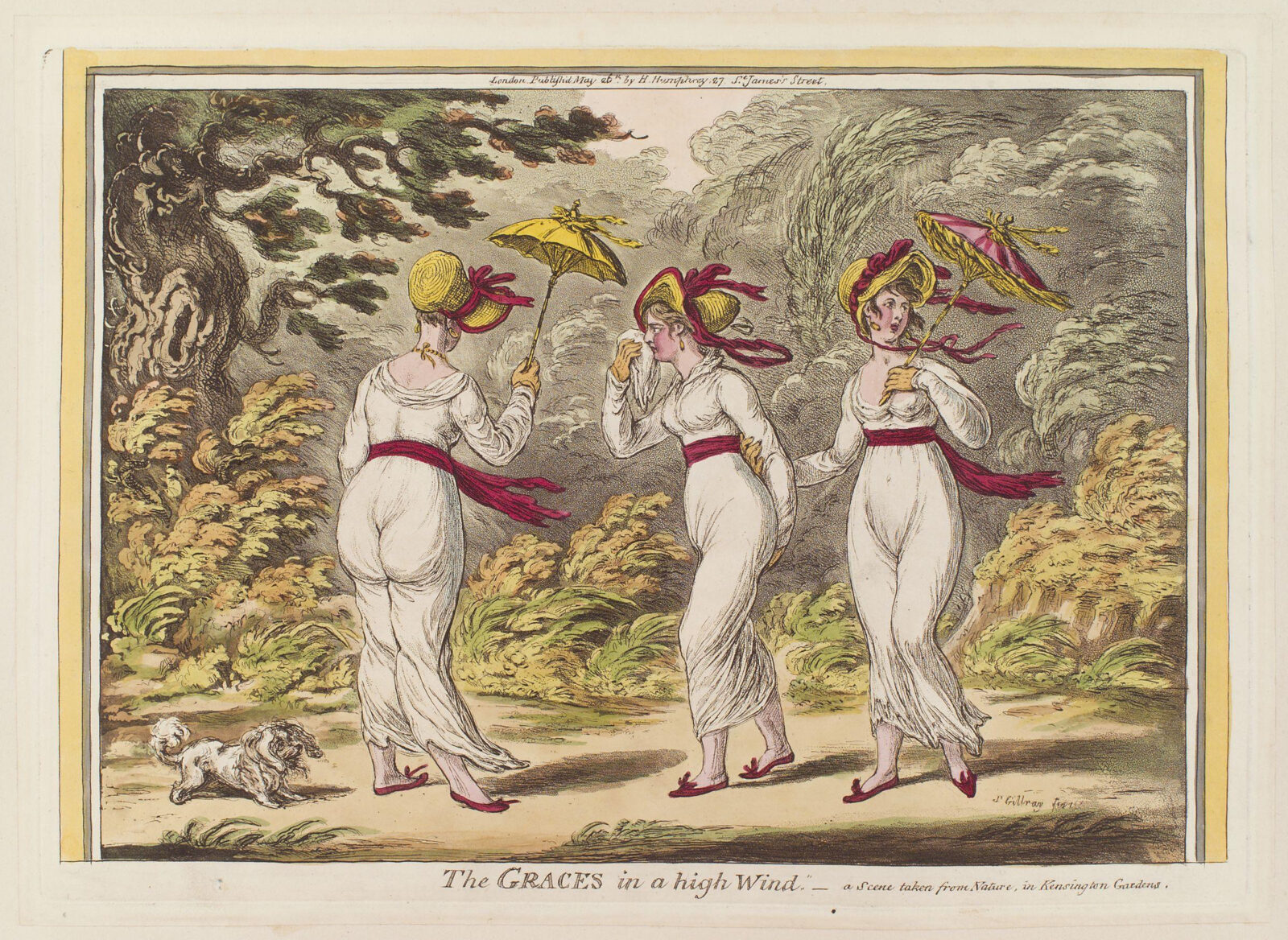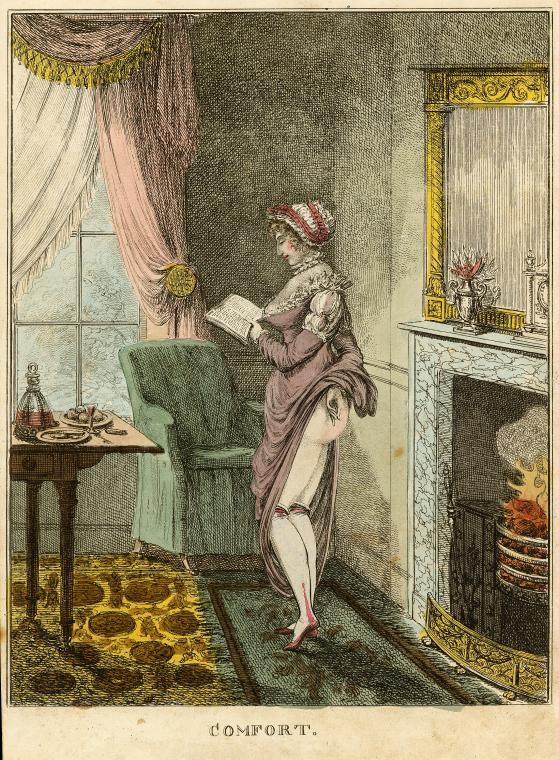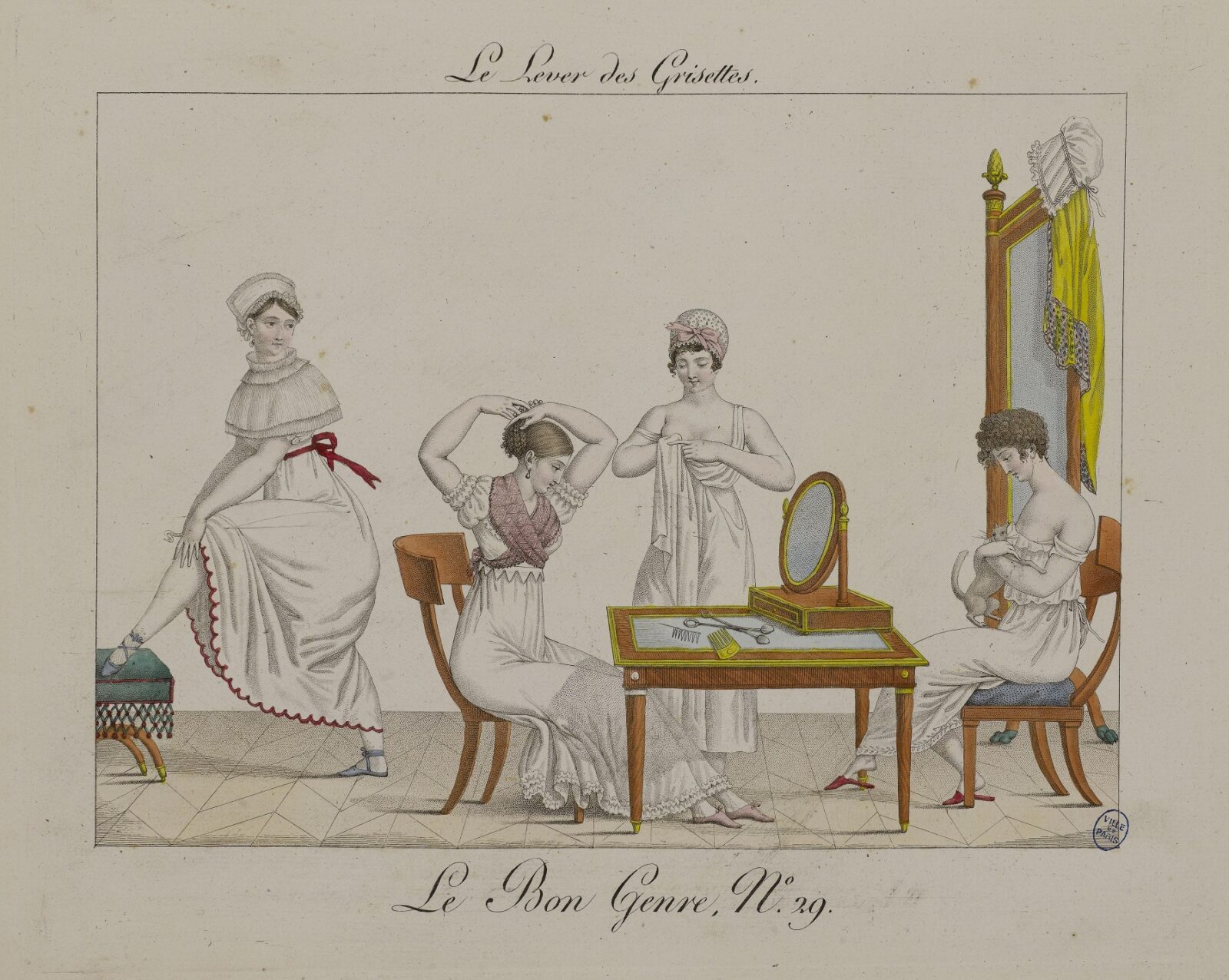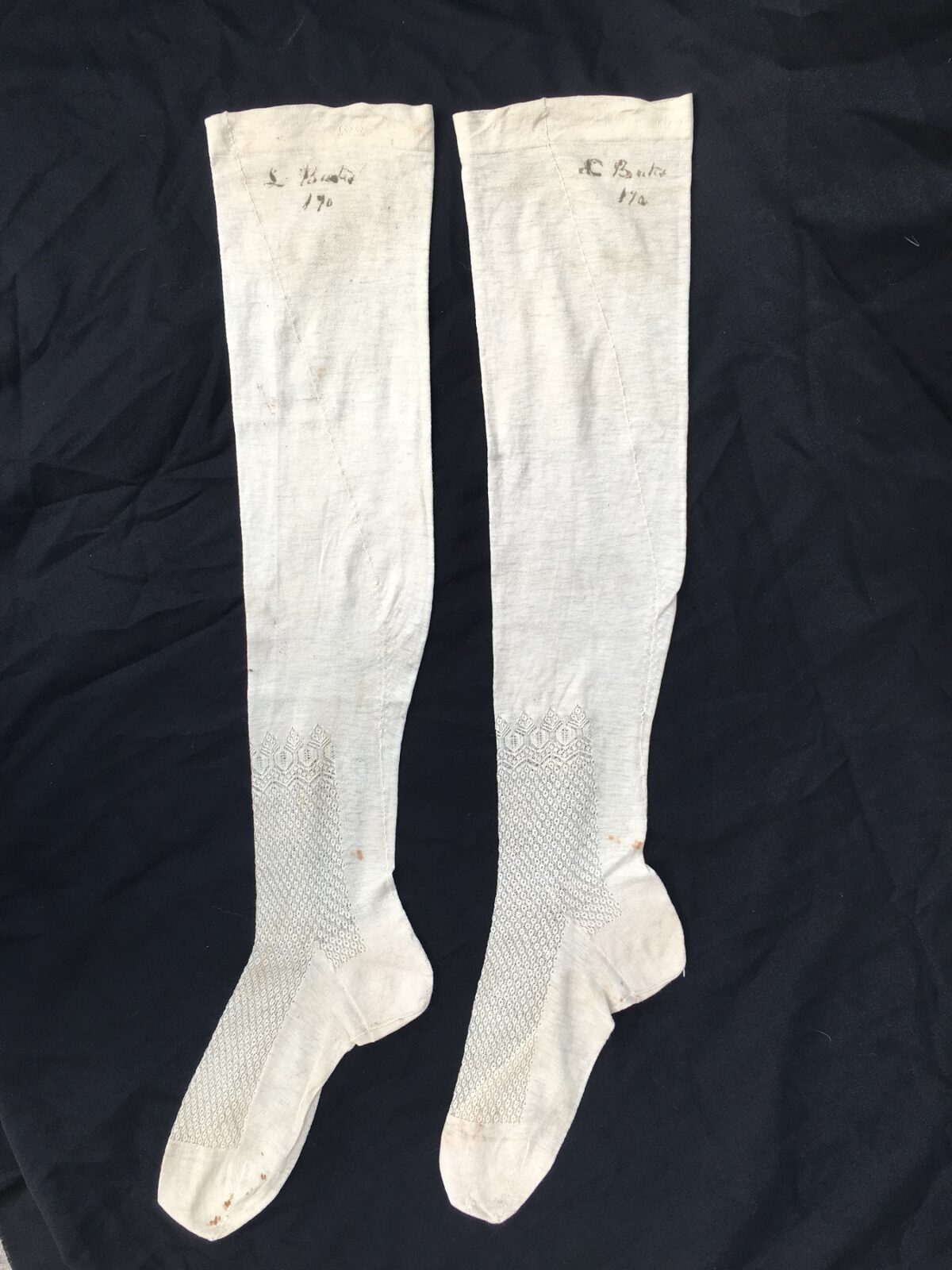Regency Bodies
In this room we display items of Georgian underwear, and look at how they were worn and washed.Regency ladies are known for their elegant, lightweight dresses and slim silhouettes. But whilst their delicate outerwear may have been beautiful, it wasn’t always so immaculate underneath. Personal hygiene was likely to have been conducted with a bowl and pitcher of water, with a full body wash only once a week or so. Equally, delicate dresses were not washed frequently – washing practices of the time were harsh and could wear clothes out quickly, so only the base layers, worn next to the skin, were changed regularly.
Ladies wore several layers of underclothes beneath their dresses, but they did not wear knickers. Today this seems risqué, but Jane and her heroines would have thought nothing of it.
Layers of skirts and petticoats meant there was little risk of a Regency lady exposing herself. Male nudity, on the other hand, was more commonplace; men often bathed naked in public.
Without knickers, it was harder for a woman to cope with menstruation. They might wrap a strip of fabric around their hips and wear a muslin napkin looped over the front and back, with stitched ‘sanitary pads’ lining it, which could be boiled and reused. Alternatively, they might use a homemade tampon fashioned from a smoothed stick, bound in absorbent linen rags and securely stitched.
With bare thighs and bottoms, the layers of shifts and petticoats worn beneath a thin dress provided modesty, making it less see-through and clinging; they were also a welcome way to keep out the cold. Petticoats could be made of flannel, linen or cotton, depending on the season.
Petticoat
Around 1820-25
Private loan
This petticoat has a drop-fronted skirt with ties and a front-closing bodice which suggests maternity-wear. The raised waist and relatively narrow skirt would have fitted neatly beneath the column-like gowns of around 1820-25, soon after Jane’s death. Her nieces could well have worn petticoats like this.
A petticoat in Jane Austen’s day could refer to any skirt worn underneath the main gown. In the 1770s and 80s, when Jane was a girl, fashionable gowns often had an opening at the front with a matching petticoat beneath. By the late 1810s, when she was in her late thirties, this had gone out of fashion and most petticoats were unseen – they were warm, durable undergarments made of linen or cambric, providing warmth rather than beauty.
As the fashions of the day evolved, so did the cut of the petticoats worn underneath. As waistlines rose in the early 19th century, petticoats with a bodice attached, such as this one, became popular, providing an underlayer right up to the bust.
Jumps
Around 1810-1815
Private loan
These tiny jumps could be worn in place of stays on a small-breasted woman. They are lightweight with no internal boning, and show how lightly an undergarment like this could be worn in the Regency period. These are a far cry from the heavily-boned corsets of the early Regency.
These jumps are made of soft linen with cording at the back for strength and shape. The handsewn eyelets and simple style indicate an early date. There is a long vertical central casing for a busk, which would have given some shape in place of boning. The lacing at the back is a replacement – it is likely to have been laced singly, rather than criss-cross.
Stockings
Private loan
‘I like the Stockings also very much & greatly prefer having only two pair of that quality, to three of an inferior sort.’
Jane to Cassandra, 27 October 1800
In Jane’s time, both men and women wore stockings. Fashionable ones were often made of white silk or cotton and were adorned with knitted or embroidered patterns at the ankle, known as ‘clocks’ or ‘clocking’. Cheaper, more utilitarian stockings were made of linen and worsted wool.
Elastic was not invented until 1820, so these stockings were secured with garters that tied just above or below the knee.
These stockings are made of cotton with hand-sewn seams. They are inscribed with their owner’s name: ‘L. Bates’. It is easy to imagine Miss Bates exclaiming over them!
These stockings probably date to a little after Jane Austen’s time – perhaps they are more like something her nieces would have worn. Stockings like these were worn from late 18th to early 20th century, but surviving examples are rare, as they were relatively disposable and unlikely to be preserved.





